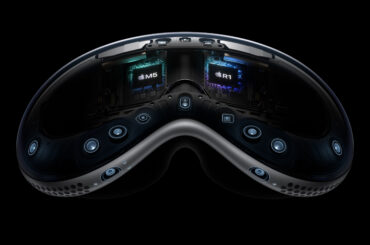Despite Computex’s push toward areas like data center AI and smart factories, PCs still have a long history at the show, reflective of the industry in Taiwan. Last year in particular was a particularly notable surge with the big AI PC push from the likes of Intel, AMD and Qualcomm. But this year was seemingly more quiet – at least, in terms of keynote addresses. Sure, Jensen Huang kept up his rockstar status with paparazzi and autograph-seeking crowds following him around, but NVIDIA’s messaging was centered around datacenter AI instead of PCs. The big PC-centric keynotes from the likes of Intel, ASUS, Microsoft and others were noticeably absent this year.
Now, Intel’s case was understandable given their recent management changes. And to be clear, they were very much engaged with the industry and small groups of media at their usual booth and hotel meeting rooms. That included working samples of their next Panther Lake processor, which will ship via OEMs as we transition into the new year. ASUS did not run its large launch events this year, but its executives were on stage at multiple keynotes like Qualcomm and AMD, and released an array of products in smaller media sessions, similar to its crosstown rivals Acer and MSI. Qualcomm held a keynote focused on design wins with HP and ASUS for its entry-level 8-core Snapdragon X processors as well as talking up its progress with native apps. But it deferred details of its next PC processor to its Snapdragon Summit in September. AMD’s keynote was more focused on workstations and pivoting ROCm to GPUs rather than talking too much about Krackan Point and NPU-based workloads.
That though was just from a keynote perspective. On the ground, the show floor still buzzed with energy from the modding community and overclockers with giant liquid nitrogen tanks. And to be clear, this year’s show was a week or two earlier than usual, clashing with other key industry events in May including Microsoft Build, Dell Tech World, Google I/O, and even Huawei’s HarmonyOS PC launch. Huawei’s efforts are worth a dedicated discussion on its own, but the short summary is that application support will be a critical gating factor. In the case of Microsoft, there were indeed a number of developments around new Copilot+ features, MCP support in Windows 11, as well enabling cross-NPU AI through Windows AI Foundry. But the lack of big use cases does makes one further wonder whether the momentum around AI PCs has stalled.
To be sure, the industry has been distracted with the trade war lately. Indeed, many of my conversations this year have led with a tariff discussion rather than AI PCs. We think that AI PC adoption will hit some speedbumps due to the volatility around tariffs, especially if buyers are under pressure to buy cheaper products in light of economic uncertainty. But the industry is still moving in a forward direction. All three of the PC CPU providers quietly showed off more apps taking advantage of their integrated NPUs. At the AMD event, Lenovo briefly mentioned that a school in Hong Kong used on-device AI trained on the school’s approved content to save time for both students and teachers. Overall, the industry’s progress is slower than what one might hope for, but it is still moving forward.
Disappointingly, the ongoing rumors of a potential NVIDIA and MediaTek entry into the Windows on Arm ecosystem were never confirmed. I recall waiting for confirmation last year too, but it never materialized in either year. MediaTek briefly mentioned its already-announced Kompanio Ultra for Chromebooks instead of Windows, while Jensen Huang deflected his AI PC comments toward GeForce GPUs (in his words, “RTX equals AI”) as well as DGX Spark, which is more of a specialized product for researchers. To that end, the more notable development wasn’t even at Computex, but instead at Dell Tech World, where the Dell Pro Max Plus workstation was unveiled with a Qualcomm AI 100 PC Inference Card consisting of two of the company’s Cloud AI 100 data center processors.
The industry is nonetheless still hopeful for AI PCs as a driver over time, with the installed base of NPUs being built first and developers eventually finding more ways to light up that power-efficient and optimized part of the die later. The forecast that we refreshed last week puts 57% of PC shipments next year with an integrated NPU, which is a few points lower than what we published in our previous cycle but nonetheless is close to expectations from market players, especially as Intel pushes both Arrow Lake as well as its upcoming Panther Lake processors next year. Upside scenarios could develop with the emergence of new silicon providers as well as new use cases, but that has not materialized yet. Let’s cross our fingers that the trade war doesn’t rock the boat too much either.




